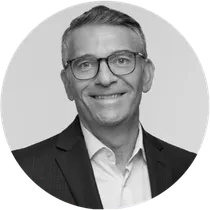Per Yamini Prakash, geographical differences mean entire differing outlooks in this respect: “I have a slightly more subdued view of how things might go because if I'm looking at pipelines and what products are out there in the pharma industry, and we are seeing outstanding innovation in some respect but incremental innovation in others. For Asia I predict the coming years being crunch time for us, value growth will slow because there will be a lot of patients wanting products but not being able to afford it so there will be some changes for the pharma and health industries.”

Integrating the big 3: diversity, equity, and sustainability business models. How can organizations create a more powerful and sustainable future?
Shamik Dasgupta, Vice President and Director, Artivion Asia Pacific (Singapore), sees both gender and racial diversity being fairly well established in most companies and something that is no longer a major issue, with the ability to hire people in different locations also being a big opportunity. With the measurement of improvement also being key, per Yamini Prakash, Country Division Head, Pharmaceuticals - Singapore/Malaysia/Brunei, Bayer (Singapore), many companies use employee voice surveys and feedback training to glean how connected employees feel to their organization and provide a safe environment to do that.

“I think it's all about the value. What is the value for patients? And how you connect the value to payers and into the technology. That being said, this is a worldwide and global market and it needs to be adapted to every kind of patient as well as jurisdiction,” Didier Leconte, Strategic Advisor, Life Sciences (Canada).

What lies ahead: the evolution of the life science industry and technology
Shamik Dasgupta believes a lot of disruption is coming. Things will improve, access to healthcare will increase dramatically, as will empowerment in health and focus on expenses. The economics of healthcare is going to be a major source of attention in the coming years. “I do believe that a lot of patient centricity which is not there in healthcare right now will happen in the next decade, particularly with all these changes that are happening around us with apps, data, information, a doctor in your home, etc. So, things are most certainly looking up.”
Attracting and retaining top industry leaders: how companies innovate and stay competitive in the talent market

“We want to import talent; on the other hand, we also want to develop people. From that perspective, mobility has actually reduced considerably. People are less willing to leave their communities and family to go to another part of the world to gain that. So, we are looking at how to develop good high potential people while at home, exposing them through various global opportunities and getting them to understand things,” says Yamini Prakash.

Maeve Byrne, EVP and Site Head, Sterling Pharma Solutions (Ireland), views the need to focus on getting the company brand out there as key. Attracting new talent but also keeping the strong talent. Retaining talent is just as important.
Shamik Dasgupta describes commercial organizations having two kinds of people: clinical support people who need to understand the technology really well, typically hired from experienced people trained by other companies and retained through various retention mechanisms such as stock options. The others are commercial and sales people, traditionally hired from other manufacturers or from the healthcare space. “We’re working on programs around those and strong graduate programs, giving people the opportunity because I think people want to have the flexibility and see different parts of the business.”
For Yamini Prakash, there is a lot more specificity around distinguishing performance. The analogy of high performance and high potential has been socialized, but this is putting the onus on people leaders to have the courage to differentiate who they consider talent and not just putting it only on the leaders, but also on the individuals in owning your development.
“It is really about focusing on the work-life balance, looking for much more stable or inner environments in companies that will help people grow. So, we can actually help individuals to assess their own interest and see how they would fit in the industry,” adds Didier Leconte, Strategic Advisor, Life Sciences (Canada).
Kestria is the world’s largest alliance of executive search firms, united in their commitment to supporting clients in sourcing and retaining key leadership talent. Our partners are as culturally and geographically diverse as our clients. Located in 40+ countries and 90+ cities on six continents, Kestria has the footprint and agility needed to serve multinationals and SMEs with dedication and a personal touch.


